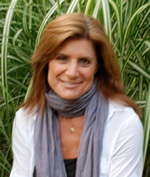That optimism was shared by many among the 120 attendees at a recent daylong meeting in Chicago between business executives, policy experts and government officials from Hamburg, Germany, engaged in the renewable-energy sector and a group of U.S. counterparts in the Chicago and Midwest region. The green technology forum enabled business and government officials from both countries to explore the potential for new partnerships and expansions of existing businesses in wind energy, solar power, green building and other areas.
The Hamburg delegation included senior executives from Nordex, Vatterfall, Siemens and PowerWind, as well as Frank Horch, Hamburg’s minister for economic affairs. American participants included representatives from the Chicago Southland Wind Council, the Illinois Department of Commerce and Economic Opportunity and Karen Weigert, the city of Chicago’s chief sustainability officer. Panelists discussed challenges that both Northern Germany and the Midwest U.S. region face in the green technology sector. Other topics focused on green building and environmental technology.
Mark Tomkins, vice-president of the German American Chamber of Commerce of the Midwest in Chicago and a moderator of two panel discussions at the conference, said the German delegation left the meetings armed with new contacts and updated regulatory information to share with their business partners and other government officials back home. While Chicago has been on German companies’ radar for years — especially in the wind energy and green buildings specialties — Mr. Tomkins predicts there could be increased activity because the German participants who return home will create a new buzz about the potential for success in Chicago.
“One of the biggest obstacles to investment here is getting out the message to German businesses that there are good opportunities here,” Mr. Tomkins said. “Some other states are better at courting foreign direct investment, and we have to promote our story more aggressively.”
Since Chicago is already considered a player in the wind-energy business and is engaged in green-building projects, Mr. Tomkins expects most of the new business development from German companies coming to the region will occur in those two areas. He added that new rules in Illinois for solar carve-outs as part of the state’s Renewable Portfolio Standards will boost investment in solar energy.
German-owned subsidiaries in Illinois already employ 36,000 workers, according to the German American Chamber. A recent survey this spring found that 43% of the German companies already operating across the U.S. in renewables are planning to expand their workforce by at least 10% annually over the next five years.
“Chicago is a really favorable market for Germans because of O’Hare Airport and because we’re right in the middle of the wind corridor of the U.S.,” said Mr. Tomkins. “The city also has access to talent — German companies need highly skilled workers in manufacturing and engineering. There’s lots of financial and managerial talent here, too.”
He added that renewable-energy companies look for a supportive political framework when choosing where to invest in expanding or establishing new outposts. “Illinois’ RPS and the Chicago Climate Action Plan really matter to companies active in those industries,” said Mr. Tomkins. “Chicago also is a city that certainly has welcomed the green building community with open arms.”
Hamburg and the northern region in Germany have a high concentration of renewable-energy and other green companies. In fact, the EU Commission named Hamburg the European Green Capital 2011.
John Dunlop, a senior technical programs manager at the non-profit American Wind Energy Assn. and one of the participants that day, said location is a critical factor that guides where wind energy companies put down roots. A number of wind energy firms are basing their headquarters in Chicago because of proximity to good wind energy resources in the region and lots of activity in the corridor stretching from North Dakota down to Texas.
“Suppliers of wind energy technology like to be close to the wind farm installations for easier transport of materials,” Mr. Dunlop said.
While the U.S. currently has 40 gigawatts of installed capacity for wind energy throughout the country, the seven-state area around Chicago has 3,000 GW of capacity, and most of it is still untapped, Mr. Dunlop pointed out. He argued the opportunity for expansion — and German investment — are enormous in the Midwest region, in part, because an increasing shift to renewable energy is expected in Illinois (and other states) thanks to state RPS laws that will require greater reliance on wind and solar power in the years ahead. In addition, the U.S. Department of Energy estimates wind energy installations throughout the U.S. will expand tenfold by 2030 and could potentially supply about 20% of the country’s total electricity consumption at that time.
A smattering of German-based companies in this sector already have U.S. outposts nearby, including Nordex USA in Chicago and Winergy Systems Drive Corp. in Elgin.
Northern Germany is considered at the forefront of wind technology on the global scene, but it has already tapped close to half of its own total wind capacity, according to Mr. Dunlop. And the option for alternative-energy companies in Germany to diversify or expand into nuclear energy at home is drying up as well. The German government recently announced after the Japanese nuclear reactor disasters that it would begin phasing out construction of any new nuclear energy operations within its own borders. Those are some of the reasons why some German companies are looking more aggressively for new offshore wind installation opportunities, including the U.S., he noted.
“Germany — and the rest of Europe — still intends to substantially switch to renewable resources, but they won’t be able to increase dramatically to on-land installations there,” said Mr. Dunlop. “They also know that we’re energy hogs in the U.S., and there are tremendous opportunities here for them as we move toward using more clean-energy resources.”

